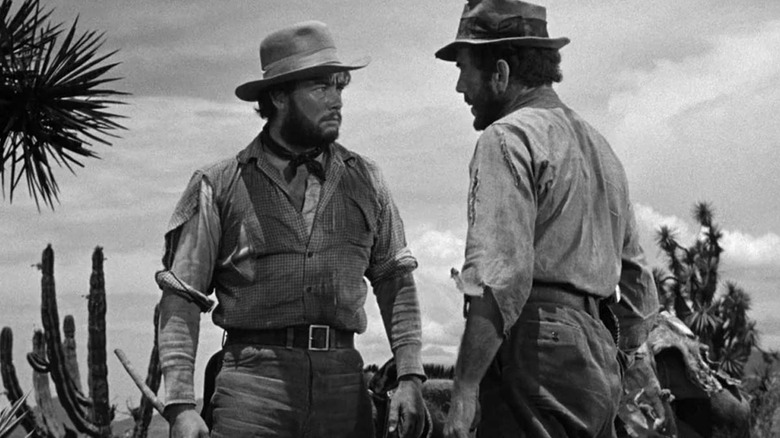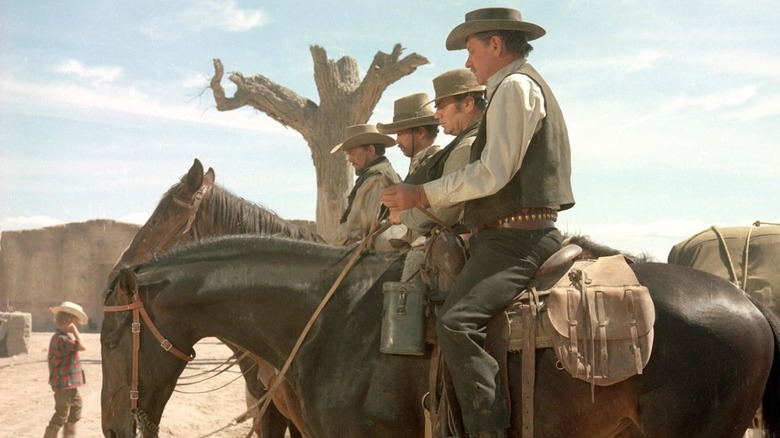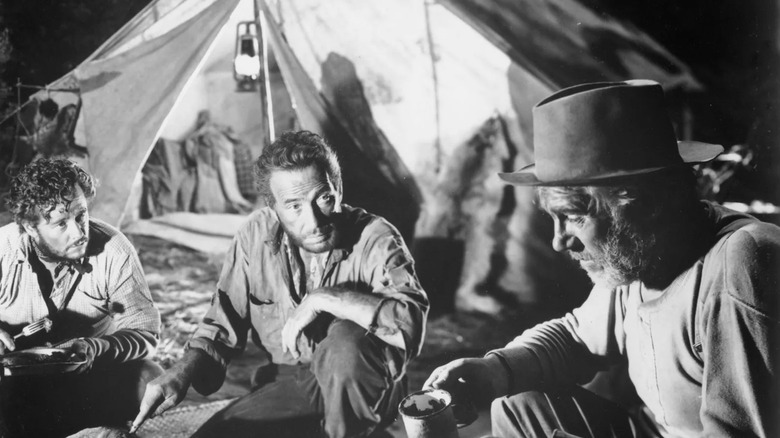What is so great in westerns? Well, to start, the approach of gender towards morality can seem clear at a glance, but the best westerns languish in morally gray landscapes and constantly redefine codes of honor. Violence is often at the heart of these stories because, without this component, we paint a disinfected and inauthentic image of a society at the dawn of change. This violence can be manifested in different forms and reflect bitter truths about human history, or it can simply highlight universal human trauma from a specific point of view. In addition, lawless spaces require men without law which are in line with the West and its philosophy, and sometimes these men undergo a transformation. The rich history of the westerns extends beyond the moving image, with writers like Cormac McCarthy and Annie Proulx having reshaped the definitions of the way Westerns can reveal the worst pulses of humanity.
Deciding which westerns deserve to be nicknamed the “best” is futile, because the genre has a wide variety of stories. For example, The Clint Eastwood featuring “Unforgiven” struggling with complex morality By pulling a reformed armor in the world of premium hunting, while “Once Upon a Time in the West” by Sergio Leone explores the concept of bitter revenge. Meanwhile, titles like the “Red River” of Howard Hawks underline the confrontation between tradition and modernity through generational conflicts, while contesting the idea of what makes a hero. The largest Western genre has undergone considerable changes over the yearsWith physical violence which is often in its center which overlaps with exams of cultural and racial oppression.
If we look at a website like Rotten Tomatoes, then the best rated westerns of all time are titles like “Stagecoach” and “My Darling Clementine” (which, as you can imagine, the two have a “fresh” score of criticism). On MetriciticThe two best rated westerns are a little more surprising, with “The Wild Bunch” and “The Treasury of Sierra Madre” at the top of the graphics at 98% each. So let’s talk about these films!
This best classified metacritic western explores the spectrum of human experience
“The Wild Bunch” by Sam Peckinpah is a experience and a half. Omnipresent nihilism links all the events of the film, but it is not a world completely devoid of hope. Texan Pike Bishop (William Holden) wants to retire after a last flight stay as an outlaw, to end up being caught in a bloody shooting that leaves most of his dead men. Pike and a handful of survivors then head to Mexico looking for something better, but they met a vicious threat as soon as they arrived. If you browse outstretched clashes, shootings and double crossings that occur after this point, “The Wild Bunch” may not seem special from a narrative point of view. But magic lies in the treatment with Peckinpah of these classic tropes, which are transmitted by rapid edition and multi-angle framing (which were not common when the film was released in 1969). This creative ingenuity means that even the most on game ideas seem fresh, like the dramatic declarations of Pike on loyalty, and how his absence makes an animal of man.
However, the epic revisionist of Peckinpah is far from perfect. The brand of machismo celebrated here is rather outdated, while the electrical shooting sequences representing violence reinforce this vision of the traditional world. The brutality, loyalty and morally ambiguous heroism are adopted by the central group of outlaw of the film, which make their personal philosophies known with a flawless unit and a hail of balls. There is also a deliberate and extended accent on visceral imaging, like a scorpion devoured by ants while a group of children looks with sadistic joy. Does Peckinpah condemn our desensitized apathy towards violence? Or is it speaking the fact that we are condemned because of that? Although it is for the debate, “The Wild Bunch” offers thrills, shocks and fury, taking you to the roller coaster of emotions that attract you.
The best rated neo-Western film by Metacritic examines how greeding is men
Then we have “The treasure of Sierra Madre”, a completely different type of western greed. Based on the novel of the same name by B. Traven, John Huston’s film takes place as a simple parable but riveted on greed. Humphrey Bogart plays the role of Fred Dobbs, a doubtful and intriguing gold prospector who is looking for an opportunity when he travels with his partner Bob (Tim Holt) at the Mexico mountains. However, before all of this occurs, Fred and Bob are initially deceived their salary of a previous job and forced to reintegrate them in the hard (and violent) way. It is only when the pair goes in search of gold that their true hearts are known to us. Locked and paranoid, these men ensure against others and each other before they finally get involved in all kinds of shenanigans and, in the end, to undergo a terribly coarse awakening.
Playing such a known character consumed by greed was a bet for Bogart, who generally embodied heroic or morally gray figures (for which we end up rooted) until this moment of his career. Fred’s transformation does not occur overnight, of course; There is a lot of prefiguration in the form of literal events and visual images, accompanied by slow combustion corruption which gives way to paranoia induced by greed. You might think that two men who know what it is to be missed and stolen their earnings would understand the traps of greed, but are we still so quick to learn? If anything, the fact that Fred and Bob were deceived at the start of the film strengthens their paranoid suspicions. They know The fact that their neighbor is not trustworthy and that the only way to covet gold is to tear it away from someone else’s hands.
The focal and thematic contrast between “The Wild Bunch” and “The Treasury of Sierra Madre” reflects the diverse range of material that the Western genre can accommodate. While a film supervises its Outlaw Renégade as imperfect men of honor, the other completely strips its two workers’ tracks of their central humanity. Despite these innate differences, Peckinpah’s film was inspired by Huston’s neo-westernhighlighting the complex network of influences that can help shape the stars in the genre. As long as these films continue to capture the complexity of human experience, there will always be more space for additional entries in this genre.







